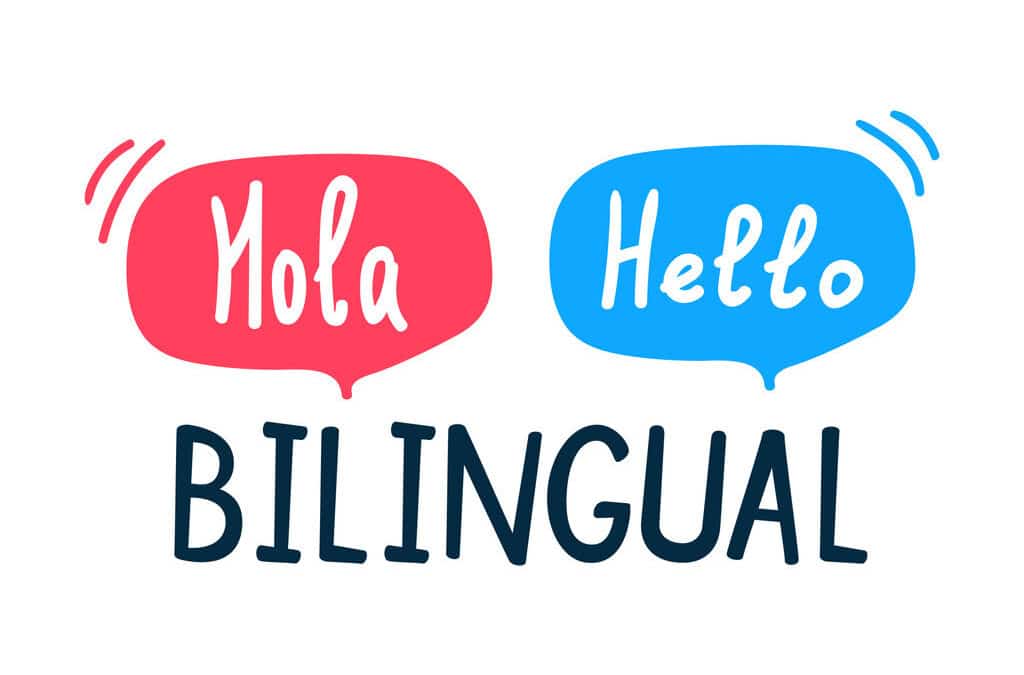There is so much more to bilingualism than just learning another language. Consistently, new research and discussions are talking about the countless benefits of a bilingual education, especially for children and their development. For example, many states in the US system have started moving away from bilingual education practices that push English first to instruction that target both native languages and English. These attempts focus more on bilingualism and biliteracy, the understanding and mastering of multiple languages, over assimilation into American culture. The net benefits of this are really uncountable – whether that be the academic, social, emotional, mental or developmental positives.
Your children will develop faster.
One aspect of development that is positively affected by bilingual education is the brain and all its systems and functions. As a young child, the brain is in its most moldable phases. Oftentimes, the habits and experiences that are exposed to young children are lasting for the rest of their lives. Children as young as 6 months have the ability to tell the difference between languages. It is quite magical to know that your baby can learn a second language as easily as their primary language. What is even more pressing is that this is an ability they lose if not used early.
Without the expectations of grammar and syntax that is pushed by conventional education, children are able to absorb sounds, patterns, structures and rules easily. Learning a language early allows for the outperformance of peers who are monolingual. Their brain becomes primed to understand different cultures as a result. Bilingual children can switch from tasks easily, focus their attention, and code-switch, using their executive functioning.
This “cognitive flexibility” aids in children’s self-control as they learn to suppress and select languages in conversation. These internal workouts strengthen the brain’s cognitive muscles and are a fun challenge for children. As a parent, you feel great because your child is interacting with the world in new ways that can only help them.
Academically, your children will soar!
These benefits do not stop at the focus and attention of children but work their way into the memory and direct academic potential of children, for example even dual-language learners who recently have started English and had considerably less vocabulary outperformed native English speakers in decoding language and its meanings. The strengthened cognitive muscles of the brain help children’s academic performance. Dual-language students interact with learning in a completely different way because of how bilingualism primes the brain for tasks and discernment.
This can translate to better test performance, better oral skills, problem-solving, and increased critical thinking. Having been exposed early to the mentally demanding task of switching back and forth between languages when deciding how to communicate primes the brain to effectively tackle the more difficult tasks ahead and make it easier to pick up other languages later on in life, including coding languages like R and Python.
Teaching your child another language is just another thing one can do as a parent to set their child up for academic success.
New experiences will help their emotional functioning.
Similarly, emotional functioning is heightened in bilingual children as a result of having to not only understand, but also respond correctly in cultural situations with completely different language cues and customs. These cultural situations, also, are not few and far between with dual-education.
As America moves more diligently towards the resegregation of schools, dual-education can effectively allow students to have interactions with diversity and cultural differences. One of the best gifts one could give their child is experience. These interactions create well-rounded and involved students with a knack for learning about and participating in the larger world around them. In order to create culturally-sensitive and aware children, one has to expose them to what the world has to offer. Teaching children a second language is a perfect way to build interest in different cultures.
Bilingualism Has Benefits Even Past Childhood.
If these strong developmental and academic reasons don’t sway you to the side of bilingual education, research has proven that using two languages can effectively protect against age-related dementia as code-switching engages more of the brain. The continued use of multiple languages keeps the brain active which is one of the lifestyle changes that often lead to the elderly developing dementia. It would be impossible to think that bilingualism is not beneficial despite its ability to affect seemingly every part of life, at any age, at any stage and at any function.
It is up to parents to advocate for the best education for their children in any regard, and the learning of a second language is no different. Why not teach them while it’s easier? Although the fear that learning a second language will confuse or stunt a child’s learning is common, we’ve done our part to demystify some of these lies about bilingual parenting on our blog. Do your research, ask for advice, talk to others, do whatever it takes to feel comfortable about the tough but rewarding journey of bilingual education. If you’re interested in learning more, check us out at TruFluency Kids where we can offer you classes starting at just $12. Your children will thank you in the future and you never know, you might pick up the language right alongside them.


